The categories of P. P.E.
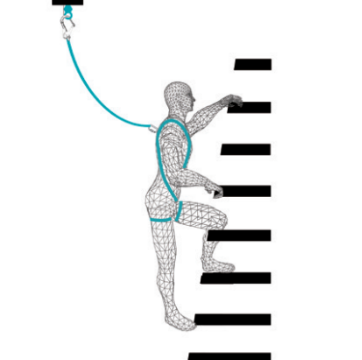
FALL ARREST SYSTEM
Protects work at height: It will stop the fall and prevent the user from hitting the ground, provided that he or she has selected the fall arrest system adapted to his or her working situation (see section Fall factor and space clearance). The fall arrest system will limit the impact caused by the fall speed to a maximum of 6kN on the human body. It is composed of a body gripping system (safety harness), a fall arrest link (lanyard, self-retracting fall arrester, ram, etc.) and an anchorage (fixed or mobile, it can be the structure itself) and training for all users and supervisors.
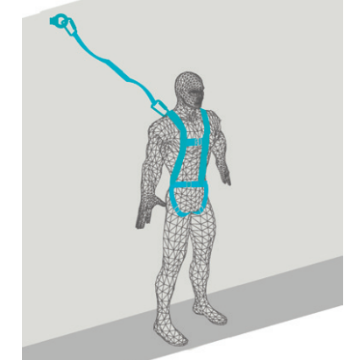
RESTRAINT SYSTEM
Prevents from falling by limiting movement. Generally speaking, it is composed of a fall protection harness and a connecting lanyard. This system is not intended to stop a fall from a height and should therefore not be considered as a fall arrest system; This even if it is implemented with components that may seem similar. The length of the lanyard must be chosen or adjusted in such a way as to make it impossible to fall.
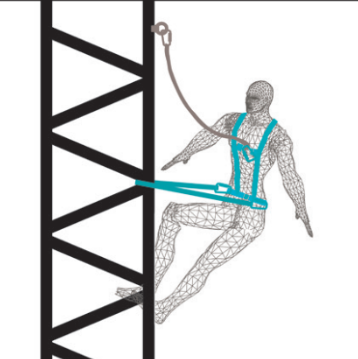
WORK POSITIONING SYSTEM
This system is not a fall protection system, but complements it in some cases. Most of the time, it is composed of a work positioning lanyard connected to the side ring of a fall protection harness equipped with a waist belt, to which is added a fall arrest system. The work positioning system allows for hands-free work and in some situations to limit the space clearance .
The basic principles of fall arrest
Hover your mouse over the letters to learn more
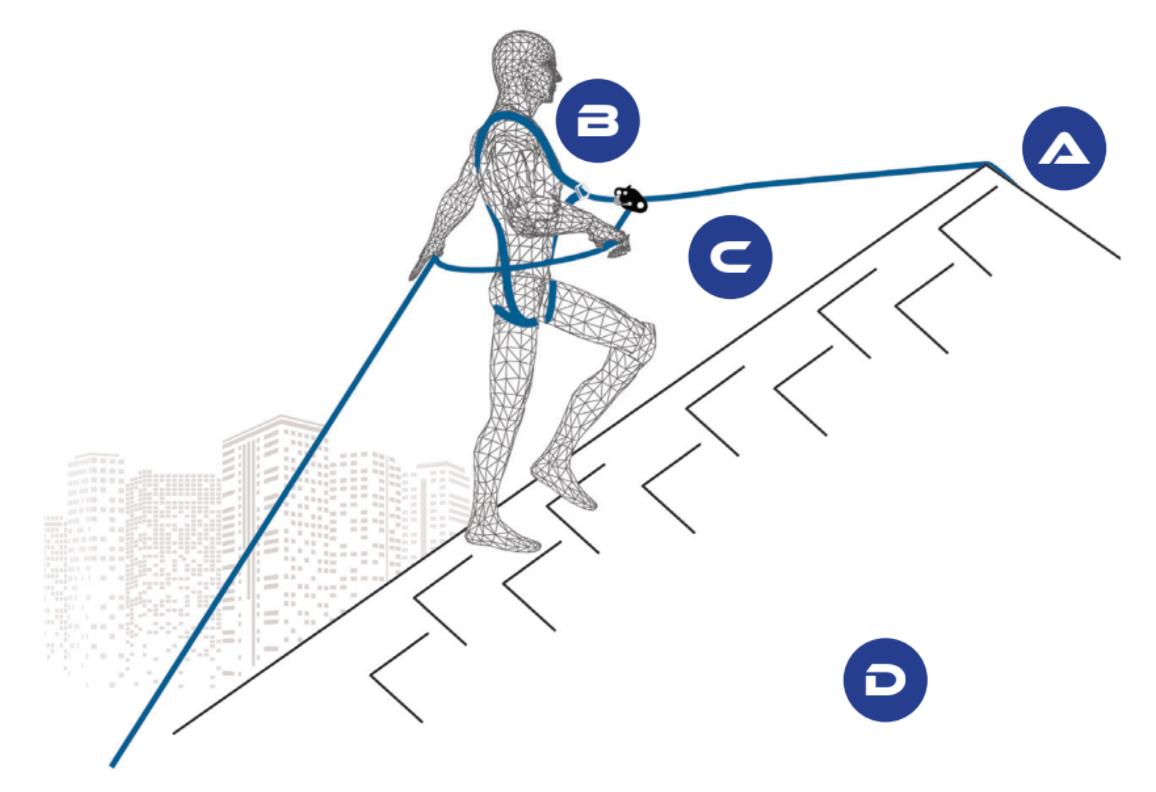
The anchor point
This is the point to which the operator will be connected via a link system.
The anchoring system can be mobile (strap ring, mobile lifeline, etc.) or fixed (lifelines, anchor plate, or structural such as a pole, pylon, etc.).
The body grip system
It is a full harness (shoulder straps and leg straps). It must be equipped with at least one dorsal fall arrest attachment point. It can offer other additional fall arrest points at the sternal level (via 2 textile buckles or via a metal ring for example). Any fall arrest attachment point on a harness must be marked "A" to indicate that it has been tested and certified as such.
The Linking System
It connects the operator to the anchorage point. It can have several functions: restraint system (most often in the form of a lanyard) or fall arrest system (reel, slider, fall arrest lanyard, etc.).
Training
Workers at height must be trained by a competent authority on the use and verification before using safety equipment. This training is correlated with a comprehensive risk analysis, which must be carried out in order to determine the right equipment and safety solutions to use.
Limiting the risks
Secure access to the workstation
To ensure the safety of workers when they need to access high areas with a risk of falling, the necessary measures must be put in place. This includes the use of personal protective equipment (PPE) such as safety harnesses, ladders, secure work platforms, guardrails and other devices to prevent fall hazards and ensure a safe and protected working environment. It also involves anticipating security needs through a complete security audit as well as the appropriate training(s) to be put in place.
Secure interventions at the workstation
These are specific measures to ensure the safety of workers when they carry out interventions, repairs or special operations in their workplace. This includes the use of appropriate personal protective equipment (PPE), such as safety harnesses, helmets, gloves, safety glasses, etc., depending on the specific risks of each intervention.
Plan an evacuation solution
To do this, it is necessary to anticipate and put in place measures to allow a quick and safe evacuation in the event of an emergency or dangerous situation in the workplace. This involves identifying evacuation routes, defining emergency exits and ensuring that they are clearly signposted.
Evacuation solutions may also include the installation of alarm and emergency communication devices, such as fire alarms, intercoms, or notification systems to quickly notify workers in the event of danger.
In order to determine the appropriate equipment, 3 major elements must be taken into consideration:
- The FALL FACTOR, in other words the position of the anchor point in relation to that of the intervener.
- The SPACE CLEARANCE, i.e. the distance necessary between the anchor point and the ground (or the first obstacle), to avoid hitting the ground in the event of a fall.
- The PENDULAR EFFECT (or swinging effect) corresponds to the lateral displacement that can occur following a fall when the anchor is not vertical to the operator.
Fall factor
There are 3 factors for falling (so 3 different levels of risk):
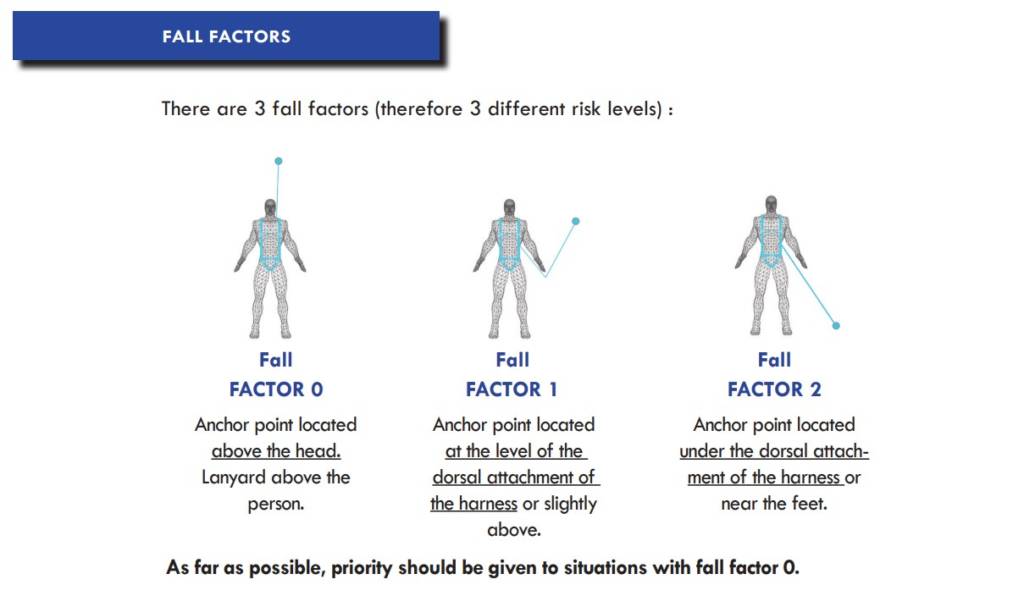
Space clearance
Use of a lanyard with a 2-metre absorber in factor 2.
This is the case where the air draft is the greatest. It is recommended to avoid this situation.
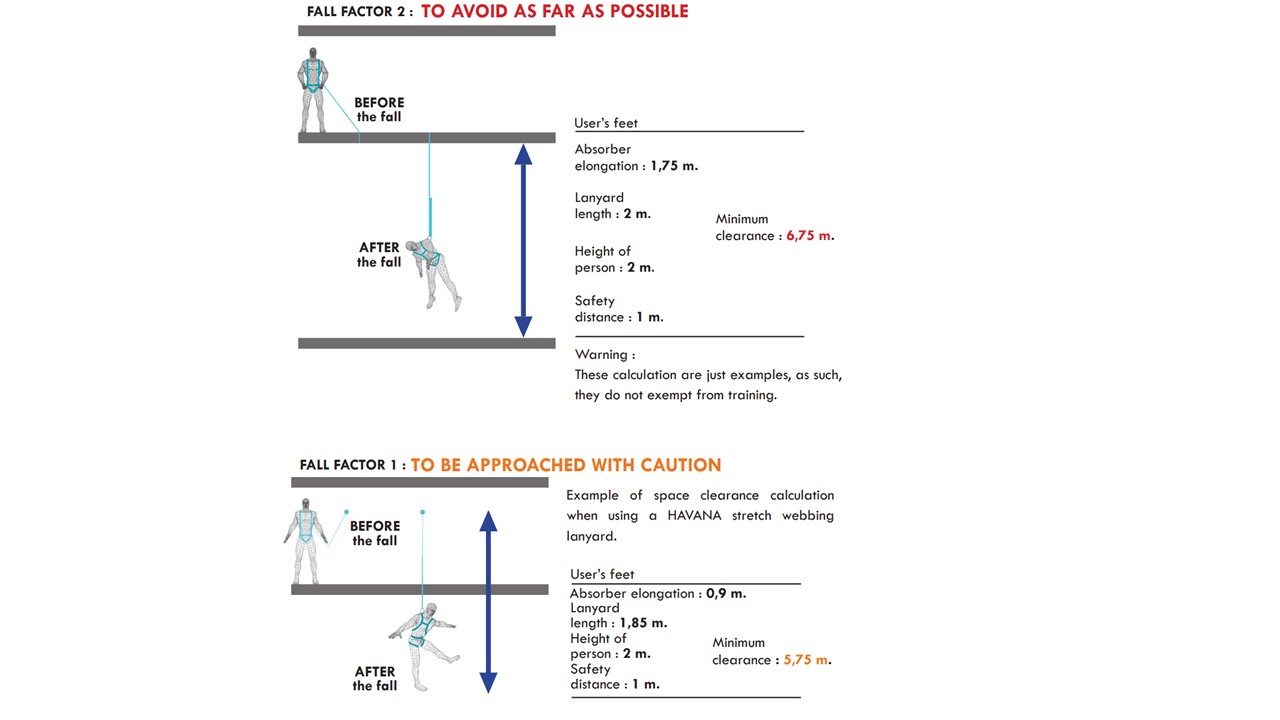
Use of a self-retracting lanyard by factor 0
The SRL being a device that locks almost immediately in the event of a fall,
its use in this type of configuration (in high point) is the case
requiring the smallest air draft. So it's the ideal situation.
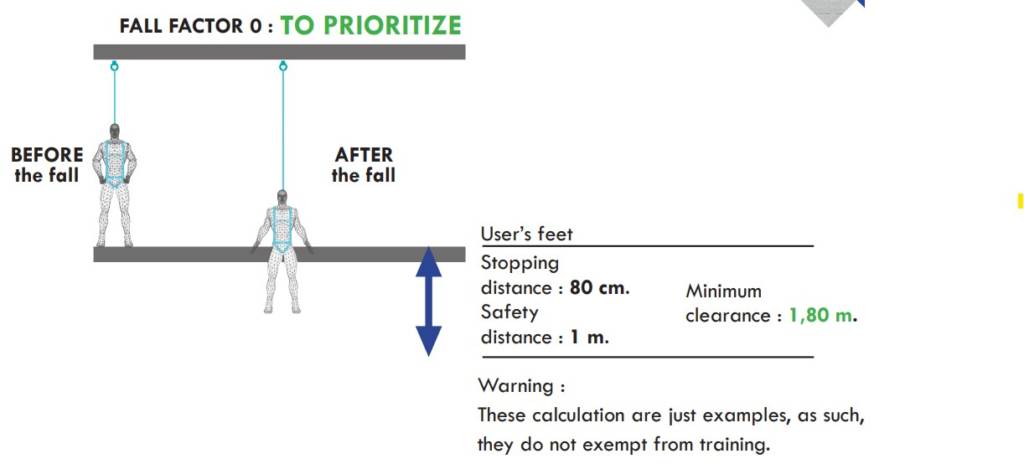
The pendulum effect
The pendulum effect (also known as the "swinging" effect) corresponds to the lateral displacement that can occur following a fall when the anchorage is not vertical to the operator. This type of situation can be dangerous because it can cause the operator to impact an obstacle in the path of the fall.
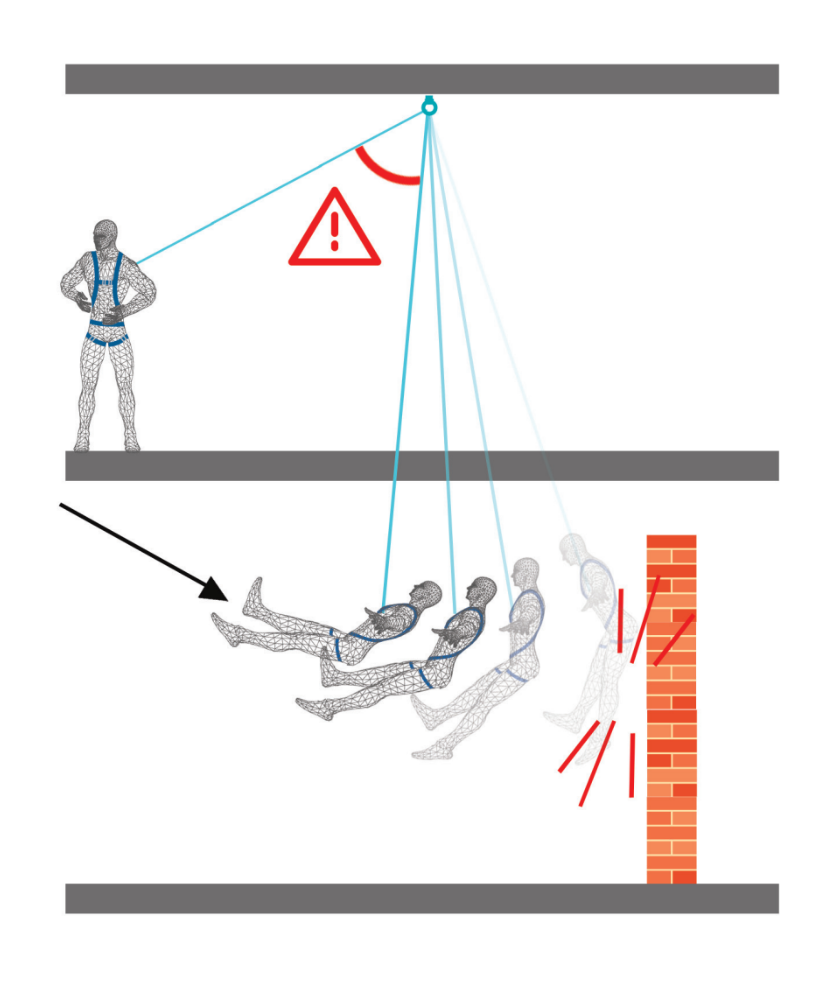
It is necessary to always check the maximum angle allowed by the fall arrest system.
These calculations are here as examples. The air clearance must be calculated based on the environmental analysis and the fall arrest solution that will be chosen.
These calculations are explained in the theoretical training on PPE.
Contact us for more information.
